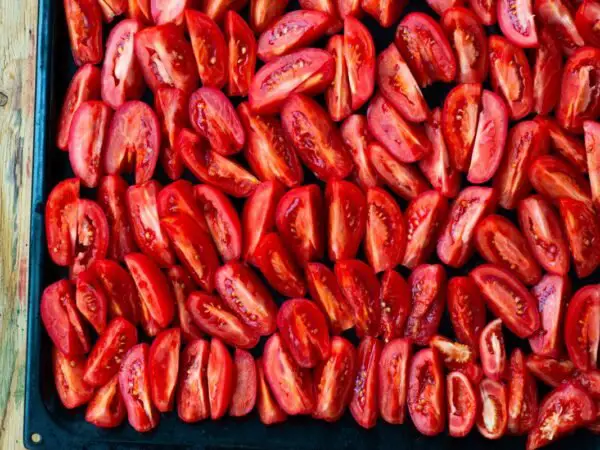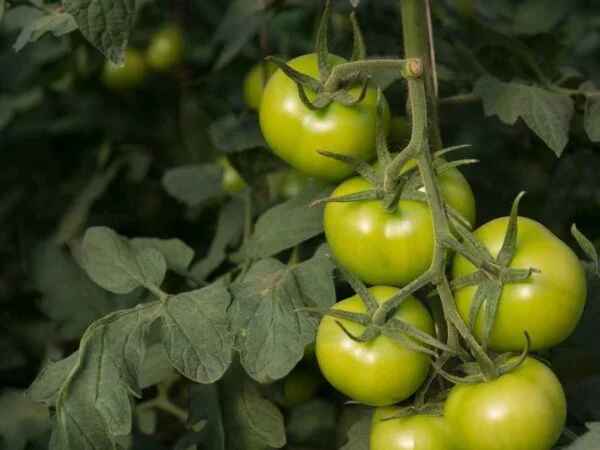The Importance of Thinning Tomato Seedlings
Thinning tomato seedlings is a vital step in the early stages of plant growth. It involves removing excess seedlings from a tray or container to allow the remaining plants to have enough space, nutrients, and light to grow effectively. This process is crucial for ensuring the overall health and productivity of tomato plants.
One of the primary reasons why thinning tomato seedlings is so important is to prevent overcrowding. When seedlings are too close together, they compete for resources such as water, sunlight, and nutrients in the soil. This overcrowding can lead to stunted growth, weak plants, and a higher risk of disease. By thinning the seedlings, you allow the remaining plants to have enough room to develop a strong root system, access to sufficient air circulation, and better opportunities for flowering and fruit production.
• Thinning tomato seedlings prevents overcrowding, which can lead to stunted growth and weak plants.
• Removing excess seedlings allows the remaining plants to have enough space, nutrients, and light for effective growth.
• Thin seedlings develop a strong root system and have better opportunities for flowering and fruit production.
• Overcrowded seedlings are more susceptible to diseases due to limited air circulation.
• Thinning helps maintain overall plant health and productivity.
Recognizing the Optimal Stage for Thinning
When it comes to thinning tomato seedlings, timing is everything. Recognizing the optimal stage for thinning is crucial to ensuring the healthy growth and development of your plants. Generally, tomato seedlings should be thinned when they have reached a certain size and have developed a couple of true leaves.
One way to determine the optimal stage for thinning is by assessing the spacing between the seedlings. If the plants are too close together and starting to overlap or compete for light, nutrients, and water, it's a clear sign that thinning is necessary. Additionally, if the seedlings appear weak and crowded, with leaves that are yellowing or wilting, it's a good indicator that they need more breathing room. By recognizing these signs and thinning at the right moment, you can promote stronger and healthier tomato plants in the long run.
Identifying Signs of Overcrowding
When it comes to identifying signs of overcrowding in your tomato seedlings, there are several key indicators to look out for. One telltale sign is the lack of space between the plants. If the leaves are touching or overlapping, it is a clear indication that the seedlings are overcrowded. Another sign to watch for is the stunted growth of the plants. When tomato seedlings do not have enough space to spread their roots and access the necessary nutrients, their growth can be hindered. Additionally, if the stem of a tomato seedling appears weak or spindly, it could be a sign of overcrowding as the plant struggles to receive adequate light and airflow amidst the crowd of other seedlings.
In addition to visual cues, there are also signs that can be observed through touch. If you gently press the soil around the base of the tomato seedlings and it feels compacted or firm, it may suggest overcrowding. This firmness indicates that the seedling's roots and the surrounding soil are lacking room to grow and expand. Furthermore, overcrowded seedlings may show signs of stress, such as yellowing leaves or wilting, as they compete for resources. By keeping a keen eye out for these signs, you can identify overcrowding in your tomato seedlings and take the necessary steps to alleviate it, ensuring healthier and more robust plants in the long run.
Factors Influencing the Timing of Thinning
Factors such as the tomato variety, growing conditions, and desired plant density all play a role in influencing the timing of thinning tomato seedlings. Different tomato varieties have varying growth rates, with some becoming more crowded faster than others. It is important to consider the specific variety being grown and its growth habit to determine when thinning should occur. Additionally, the growing conditions, such as temperature, humidity, and sunlight, can affect the speed at which tomato seedlings grow and become overcrowded. Properly assessing these environmental factors is crucial in determining the optimal timing for thinning.
Furthermore, the desired plant density will also play a significant role in deciding when to thin tomato seedlings. Some gardeners prefer to keep the seedlings closer together for a more compact and bushy appearance, while others opt for a more spaced out arrangement for better airflow and disease prevention. The desired final spacing between the tomato plants will influence the timing of thinning. It is important to consider these factors and strike a balance between allowing the seedlings enough space to grow and avoiding overcrowding that could hinder their development.
The Risks of Delaying Thinning
Thinning tomato seedlings is a crucial step in ensuring their healthy growth and development. However, delaying this process can result in a number of risks that can significantly impact the overall productivity of your tomato plants.
One of the primary risks of delaying thinning is the increased competition for resources among the seedlings. As the plants grow and mature, they require an adequate supply of nutrients, water, and sunlight. When too many seedlings are crowded together, they have to compete for these essential resources, leading to stunted growth and reduced yields. Additionally, overcrowded seedlings are more prone to diseases and pest infestations, as the lack of airflow and increased humidity can create an ideal environment for these problems to thrive. Therefore, it is imperative to tackle thinning in a timely manner to avoid these potential risks.
Tools and Techniques for Thinning Tomato Seedlings
When it comes to thinning tomato seedlings, having the right tools and techniques can make the process much easier and more efficient. One of the most commonly used tools for thinning tomato seedlings is a pair of sharp scissors or pruning shears. These tools allow for precise and clean cuts, minimizing any damage to the remaining seedlings. Additionally, using a small handheld rake or fork can help gently lift and remove the unwanted seedlings without disturbing the roots of the remaining plants.
In terms of techniques, it is important to thin tomato seedlings when they are still small, as it becomes more challenging as they grow larger and their roots become entwined. Start by assessing the density of the seedlings and identify those that are weaker or have less desirable characteristics. Carefully remove these seedlings, ensuring you leave enough space between the remaining plants to foster healthy growth. Take care not to disturb the roots of the remaining seedlings and avoid handling them by their delicate stems. By using the right tools and following proper techniques, you can ensure successful thinning and promote the optimal growth of your tomato seedlings.
Step-by-Step Guide to Thinning Tomato Seedlings
Thinning tomato seedlings is an important step in their growth and development. It helps ensure that each plant has enough space, nutrients, and sunlight to thrive. To start, carefully observe your seedlings about two to three weeks after germination. Look for signs of overcrowding, such as the leaves appearing crowded and touching one another. Once you have identified the potential seedlings for thinning, it's time to prepare for the process.
Before thinning, make sure to have a clean pair of scissors or gardening shears. Sterilize the blades by wiping them with rubbing alcohol or dipping them in a bleach solution. This helps prevent the spread of disease or infections. Next, gently lift the overcrowded seedling from the soil, holding it close to the stem to avoid damaging the roots. Carefully clip the unwanted seedling just above the soil level. Be cautious not to injure the surrounding healthy plants. Continue this process until each remaining seedling is adequately spaced apart.
Common Mistakes to Avoid During Thinning
When thinning tomato seedlings, it is important to avoid making common mistakes that can hinder their growth and development. One common mistake to avoid is over-thinning the seedlings. While it is necessary to remove some seedlings to create adequate spacing, removing too many can leave gaps in the row and allow weeds to take over. It is crucial to strike a balance and only remove the weaker or less vigorous seedlings, ensuring that the remaining ones have enough room to grow.
Another mistake to avoid during thinning is pulling the seedlings out by their leaves. This can cause damage to the delicate stems and roots, affecting the overall health of the plant. The proper technique is to gently grasp the seedling close to the soil line and carefully lift it out, making sure to disturb the surrounding soil as little as possible. By avoiding these common mistakes, gardeners can ensure the optimal thinning of their tomato seedlings, setting the stage for healthy and productive plants.
Caring for Thinned Tomato Seedlings
After thinning your tomato seedlings, it is crucial to provide them with proper care to ensure their healthy growth. Firstly, make sure to water the seedlings regularly, keeping the soil moist but not waterlogged. This will allow the roots to establish well and ensure that the plants receive adequate hydration. It is essential to water the seedlings gently and ensure that the water reaches the roots rather than just wetting the foliage.
In addition to watering, it is important to monitor the temperature and provide appropriate lighting conditions for the thinned seedlings. Tomato plants thrive in warm temperatures, so maintain the ambient temperature around the seedlings between 70 to 80°F (21 to 27°C). Furthermore, ensure that the seedlings receive ample sunlight or use artificial lighting to provide them with a minimum of 12-14 hours of light per day. Adequate light will facilitate photosynthesis and promote sturdy, healthy growth in the tomato seedlings.
Monitoring and Adjusting Thinned Tomato Seedlings
After thinning your tomato seedlings, it is crucial to closely monitor their development and make necessary adjustments. Regularly check the remaining plants for any signs of stress or nutrient deficiencies. Look out for yellowing leaves, stunted growth, or wilting, as these may indicate that the remaining seedlings are not receiving enough nutrients or water. Adjust the watering schedule and amend the soil with organic fertilizers if needed. Additionally, keep an eye on the surrounding environment, such as temperature fluctuations or pest activity, as these factors can also impact the growth of your thinned tomato seedlings.
As the thinned tomato seedlings continue to grow, it is important to maintain the appropriate spacing between each plant. Even after thinning, overcrowding can still occur if the remaining seedlings spread and intertwine their branches. Regularly check the spacing between the plants and if necessary, gently relocate or reposition them to ensure proper air circulation and reduce the risk of disease. Prune any excessive growth and remove any suckers that may divert energy away from the main stem. By monitoring and adjusting your thinned tomato seedlings throughout their growth, you can maximize their potential and ensure a healthy and abundant harvest.
Why is thinning tomato seedlings important?
Thinning tomato seedlings is important to ensure proper growth and development of each plant. It allows for better air circulation, reduces competition for nutrients and sunlight, and prevents overcrowding.
How do I know when is the optimal stage for thinning tomato seedlings?
The optimal stage for thinning tomato seedlings is when they have developed their first set of true leaves. At this stage, they are sturdy enough to handle the thinning process.
What are the signs of overcrowding in tomato seedlings?
Signs of overcrowding in tomato seedlings include stunted growth, yellowing leaves, and a weak or spindly appearance. The plants may also struggle to get enough sunlight and nutrients.
What factors influence the timing of thinning tomato seedlings?
The factors that influence the timing of thinning tomato seedlings include the specific variety of tomato, the growing conditions, and the desired spacing between plants.
What are the risks of delaying thinning tomato seedlings?
Delaying thinning tomato seedlings can lead to overcrowding, which can inhibit their growth and increase the risk of disease. Overcrowded plants may also have difficulty accessing sufficient nutrients and sunlight.
What tools and techniques can be used for thinning tomato seedlings?
Some tools and techniques that can be used for thinning tomato seedlings include scissors or pruning shears for cutting excess seedlings, gently pulling out unwanted seedlings by hand, or using a small garden trowel to carefully lift and remove seedlings.
Can you provide a step-by-step guide to thinning tomato seedlings?
Yes, the article provides a step-by-step guide to thinning tomato seedlings, which includes detailed instructions on how to identify and remove excess seedlings.
What are some common mistakes to avoid during thinning tomato seedlings?
Some common mistakes to avoid during thinning tomato seedlings include pulling or cutting the wrong seedlings, damaging the roots of desired seedlings, or thinning too aggressively and removing too many plants.
How should I care for thinned tomato seedlings after thinning?
After thinning tomato seedlings, it is important to water them adequately and provide proper sunlight. Regularly monitor their growth and ensure they have sufficient nutrients by fertilizing as needed.
How should I monitor and adjust thinned tomato seedlings?
Monitoring and adjusting thinned tomato seedlings involves regularly observing their growth, checking for any signs of stress or nutrient deficiencies, and making necessary adjustments such as providing additional support or adjusting watering and fertilization practices.
Image Source: Paid image from CANVA




